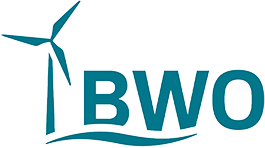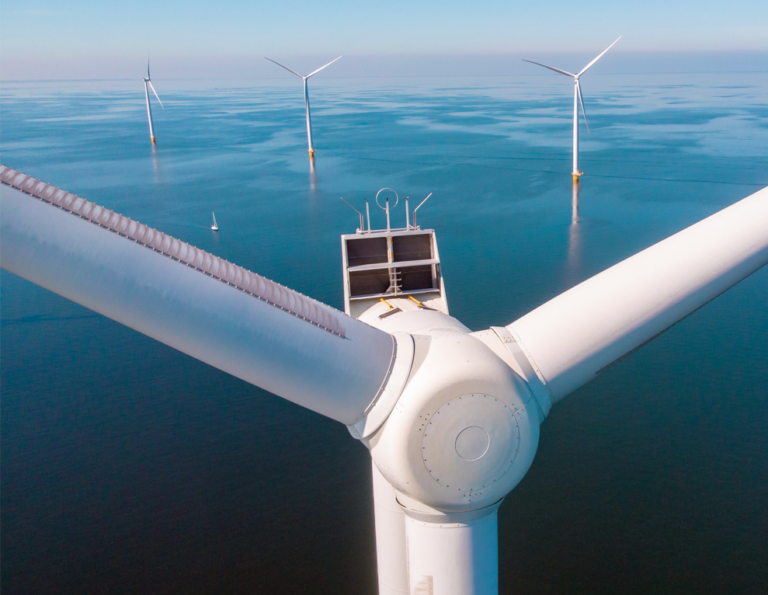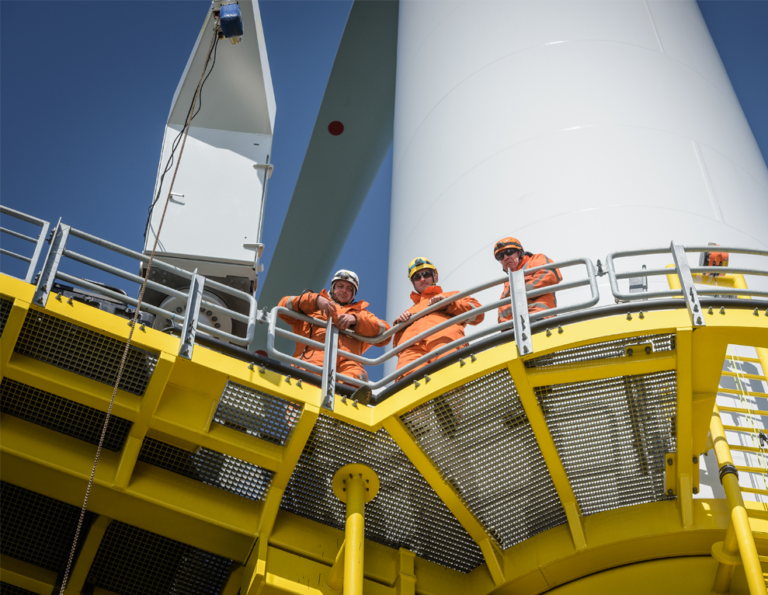Despite the expansion gap — offshore wind industry in Germany with positive future prospects
- In the first half of 1 only 2020 MW of offshore wind energy expansion in Germany, total output as of June 219th was 30 MW
- The industry welcomes long-term planning security with increased expansion targets up to 2040 and calls for an economically efficient remuneration model
- Create an incentive system for the market ramp-up of green hydrogen
- EU Council Presidency and North Sea Cooperation: Laying the cornerstone for cross-border offshore wind projects
- Offshore wind energy will make a significant contribution to “green recovery”
"Especially in light of the low expansion, we welcome the fact that the anchoring of 20 GW offshore wind energy by 2030 and 40 GW by 2040 will now create long-term planning security. With the increased expansion targets, offshore wind energy strengthens climate protection and creates economic development, ”comment the industry organizations BWE, BWO, VDMA, WAB and the OFFSHORE WINDENERGIE foundation on the offshore expansion figures published today by Deutsche WindGuard.
As forecast at the beginning of the year, only 2020 offshore wind turbines with an output of 32 MW were connected to the German grid in the first half of 219[1]. This value corresponds to around 11 percent of the installed capacity of 2 GW that the domestic value chain was able to realize in 2015. According to the current status, 1.501 plants with a total output of 7.760 MW reliably deliver offshore wind power in Germany. The federal government's expansion target for 2020 was achieved in the first half of the year.
“Not least because of the long lead times for offshore wind farms, we have long warned that there would be an expansion gap. Now we're in the middle of it. The challenge now is to keep this expansion gap as small as possible and to strengthen the home market for offshore wind energy sustainably and permanently. In addition to the legal anchoring of long-term goals, this also includes the fastest possible tendering of the available space and the choice of an economically efficient remuneration system for future offshore wind projects, ”said the industry organizations. The basis for this should be created quickly after the summer break and in dialogue with the industry.
Contracts for difference are economically efficient
Like the Federal Council, the industry is in favor of seriously examining the introduction of contracts for difference and discussing it with the involvement of all relevant stakeholders. This model already exists in other European countries - for example in Great Britain, France, Italy and Denmark. It would also simplify cross-border tenders.
"The second bid component envisaged in the amendment to WindSeeG, on the other hand, increases the investment costs and thus also the electricity generation costs," said the industry organizations. However, internationally competitive electricity prices are of great importance for economic reconstruction after the Corona crisis. Otherwise there is a risk of further loss of important jobs and “carbon leakage” due to German industrial companies moving abroad.
Unlike the second bid component, contracts for differences could secure the realization of offshore wind projects and thus contribute to the achievement of national and European CO2 reduction targets. “It is important to check whether a connection with Power Purchase Agreements (PPA) or other forms of marketing and thus a transfer of the green characteristic is possible. Differential contracts designed in this way ensure a more cost-efficient expansion of offshore wind energy, prevent over-funding in connection with competitive tenders and guarantee long-term low and stable electricity costs, ”argue the industry organizations. Experts from the German Institute for Economic Research assume that the electricity production costs can be reduced by about 30 percent compared to the proposals currently submitted by the BMWi through contracts for difference.
Offshore wind energy is ideally suited for the production of green hydrogen
The associations welcome the ramp-up in the national hydrogen strategy (NWS) in the home market and underline that offshore wind energy plays a key role in this. "With its high full load hours, offshore wind energy is ideally suited for the production of green hydrogen," explain the industry organizations. Since direct electrification is not technically or economically feasible in all sectors, synthetic energy sources based on renewable energies are an indispensable element in achieving climate targets.
“The NWS opens up the opportunity to use around 3 GW of offshore wind energy for the production of green hydrogen. For this purpose, additional areas must be examined in advance and tendered as quickly as possible, ”said the industry organizations. The Federal Maritime and Hydrographic Agency (BSH) named the first two areas for Power-to-X in the North and Baltic Seas in the preliminary draft of the area development plan. The award procedure for these areas should start in 2021. Here, too, an incentive system with efficient levy and levy mechanisms must be developed in order to bring about a rapid market ramp-up of green hydrogen in Germany.
Create the conditions for cross-border offshore projects
In the program of the German EU Council Presidency, offshore wind energy is also recognized as an important pillar of “green recovery” and the energy transition. Since Germany has also been chairing the North Sea Cooperation since the beginning of the year, the next six months offer good conditions for laying the foundation for cross-border offshore wind projects.
“The international networking of offshore wind farms is a strategic task that is becoming more and more important. From our point of view, the initiative for maritime spatial planning is a decisive first step, ”explain the industry organizations. What is needed now is a quick determination of which areas are suitable for cross-border projects in order to clarify the investment framework on this basis.
Offshore wind energy will make a significant contribution to “green recovery”
“In the North and Baltic Seas, the potential has not yet been exhausted. This also includes available space and free network capacities of 1.860 MW that could be allocated at short notice. If the course is set correctly now, it will not only make a significant contribution to the sustainable economic recovery after the Corona crisis, but will also make a major contribution to achieving the climate goals and ensuring security of supply during the energy transition, "announce the industry associations .
[1] In the MaStR, July 1, 2020 was reported as the commissioning date for one of the OWTs.
About the annual figures "Status of the offshore wind energy expansion in Germany"
In the analysis by Deutsche WindGuard, the expansion figures for offshore wind energy have been collected separately from those for onshore wind energy since 2012. The clients are the Bundesverband WindEnergie (BWE), the Federal Association of Wind Park Operators Offshore eV, the Offshore Wind Energy Foundation, VDMA Power Systems and WAB eV
Via the Federal Association of Wind Farm Operators Offshore eV
The Federal Association of Wind Farm Operators Offshore (BWO eV) is the federal association of all companies that plan, build and operate wind farms in the German North and Baltic Seas. In this way, the BWO bundles the strength and know-how for a successful energy transition in Germany and Europe.
About the OFFSHORE WIND ENERGY foundation
The aim of the foundation is to consolidate the role of offshore wind energy in Germany and Europe and to promote its expansion in the interests of environmental and climate protection. It has established itself as a non-partisan, supra-regional and independent organization for the entire offshore wind energy sector and acts as a communication platform for actors from politics, business and research. The foundation serves the exchange of knowledge and sees itself as a driving force for new initiatives
About VDMA Power Systems
VDMA Power Systems is a trade association of the Association of German Mechanical and Plant Engineering VDMA eV The trade association represents the interests of manufacturers of wind energy and hydropower systems, fuel cells, gas / steam turbines and systems as well as engine systems at home and abroad. For all of them, VDMA Power Systems serves as an information and communication platform for all topics in the sectors such as energy policy, legislation, market analyzes, trade fairs, norms, standardization as well as press and public relations.
About the WAB (eV)
The WAB, based in Bremerhaven, is the nationwide contact for the offshore wind industry
Onshore network in the northwest and promotes the production of “green” hydrogen from wind power. The association includes more than 250 smaller and larger companies and institutes from all areas of the wind industry, the maritime industry and research.
Equipment:
Contact person:
Head of Communications
Phone: + 49 (30) 28 444 650
Email: l.dettmer@bwo-offshorewind.de




